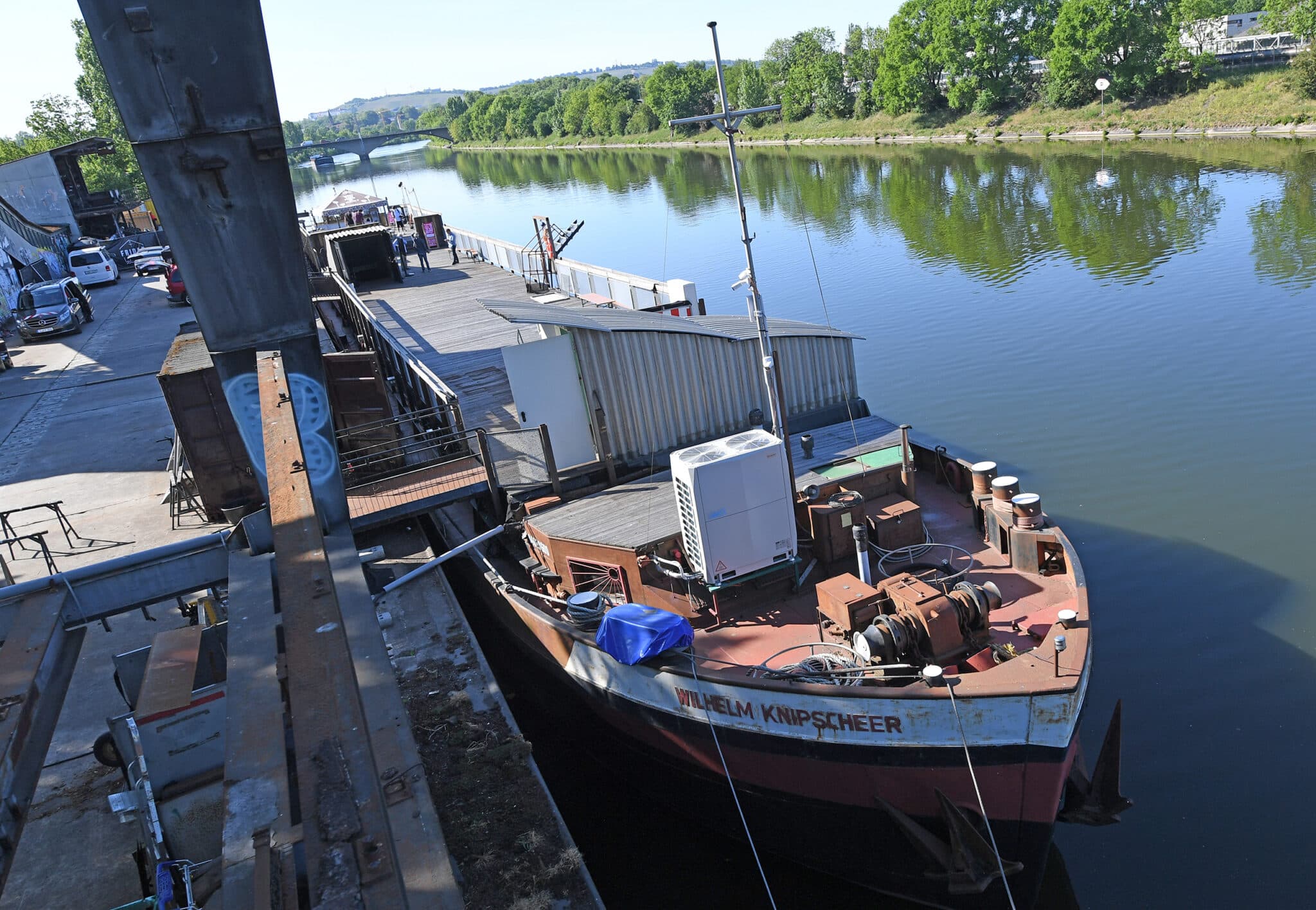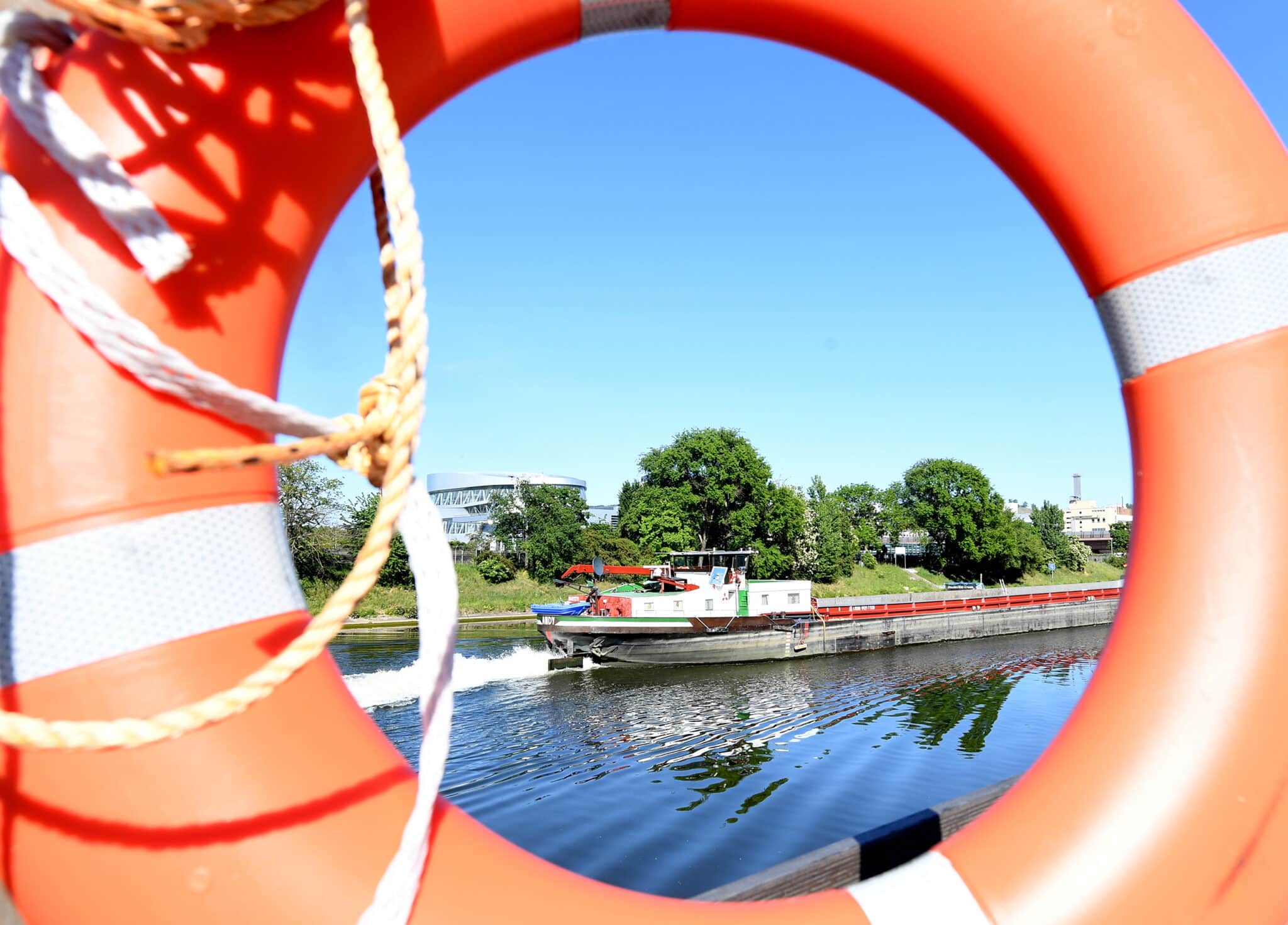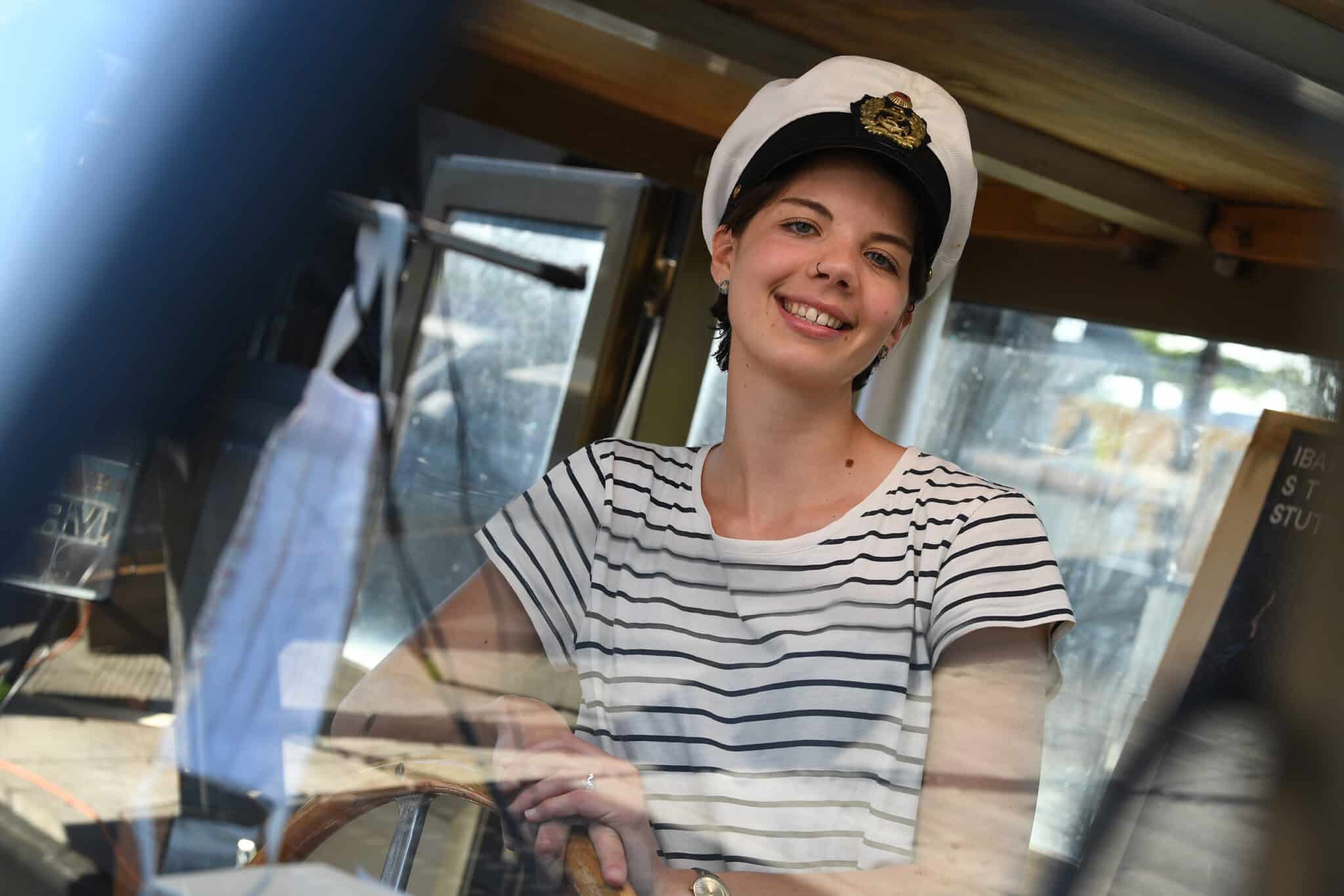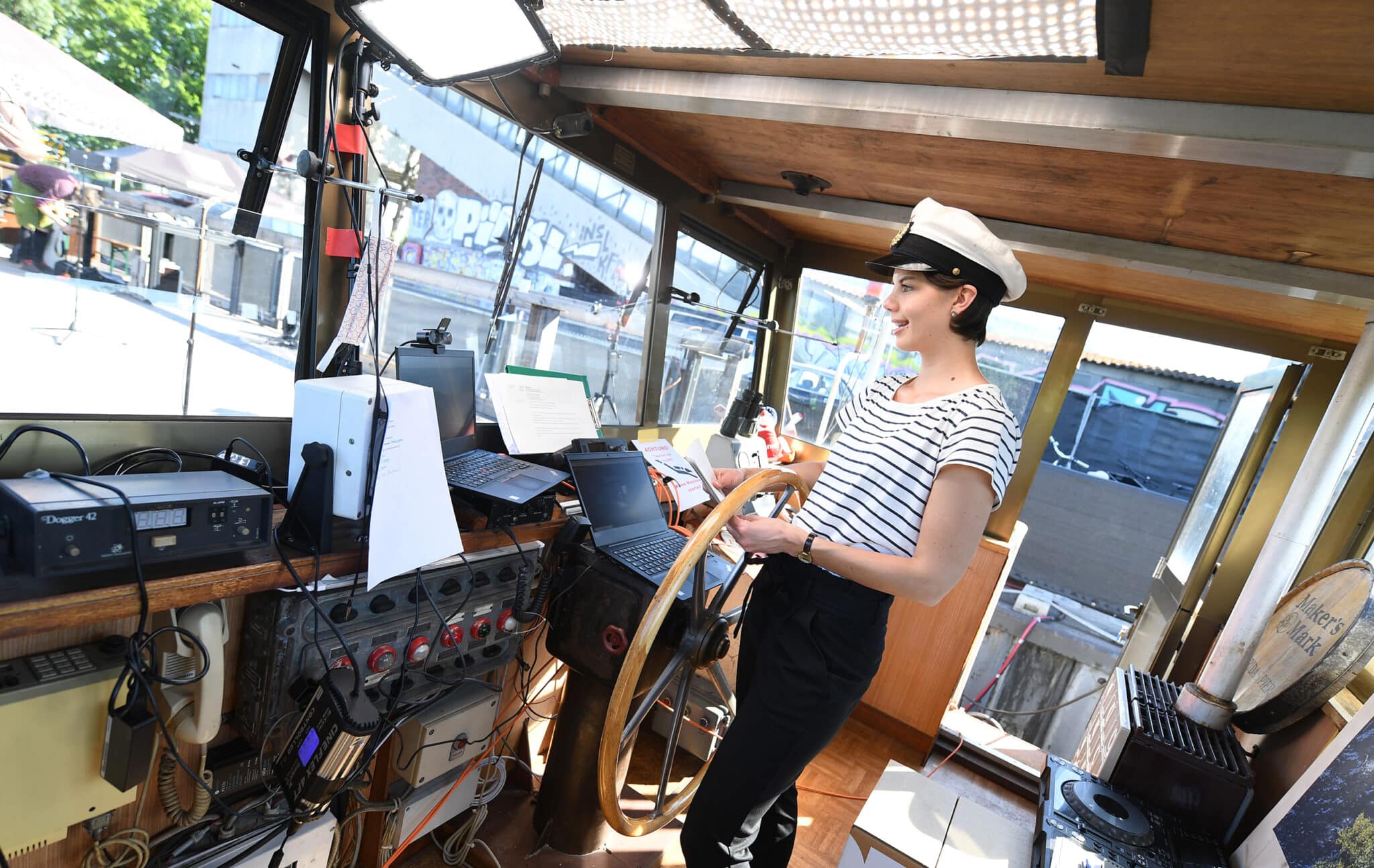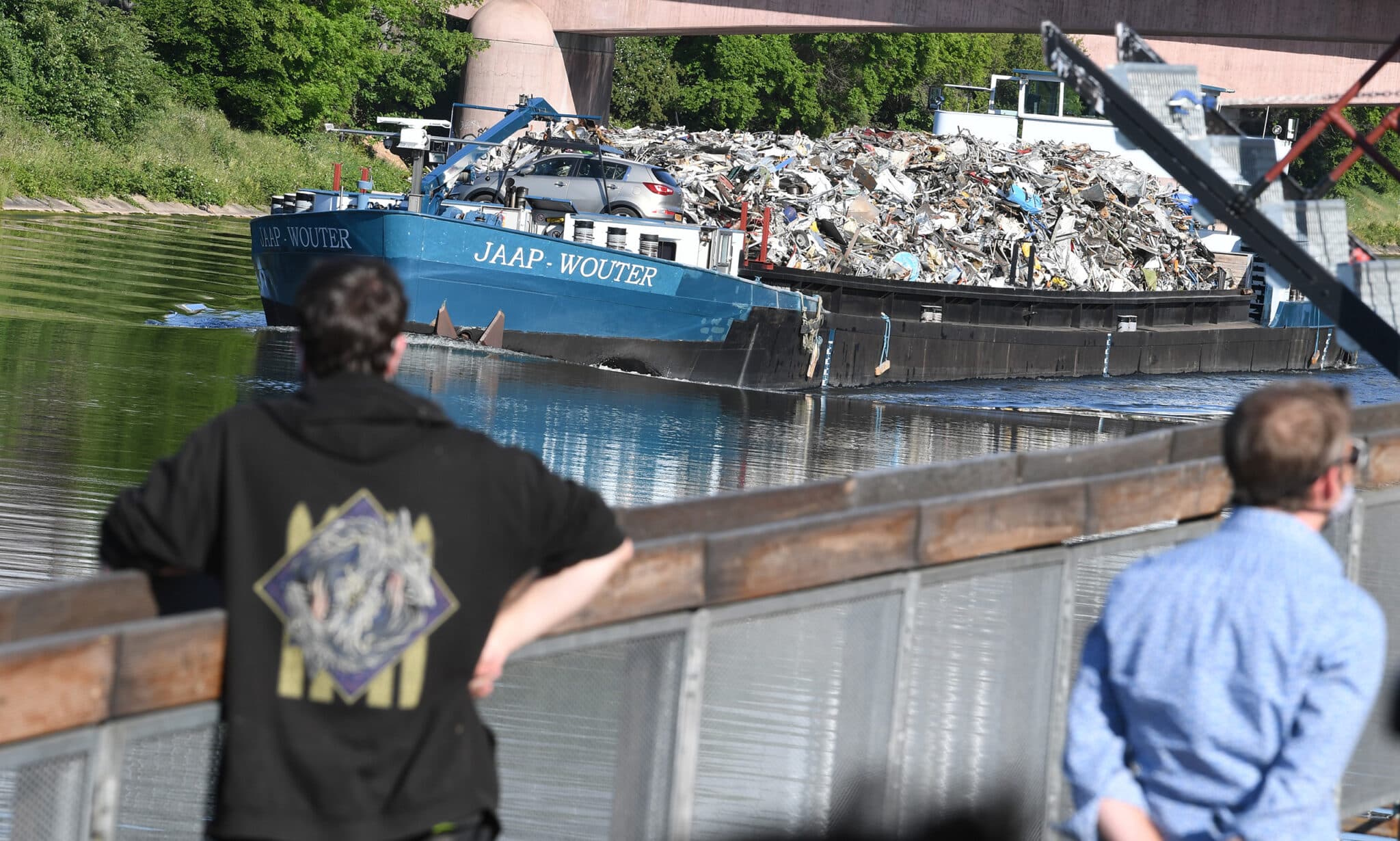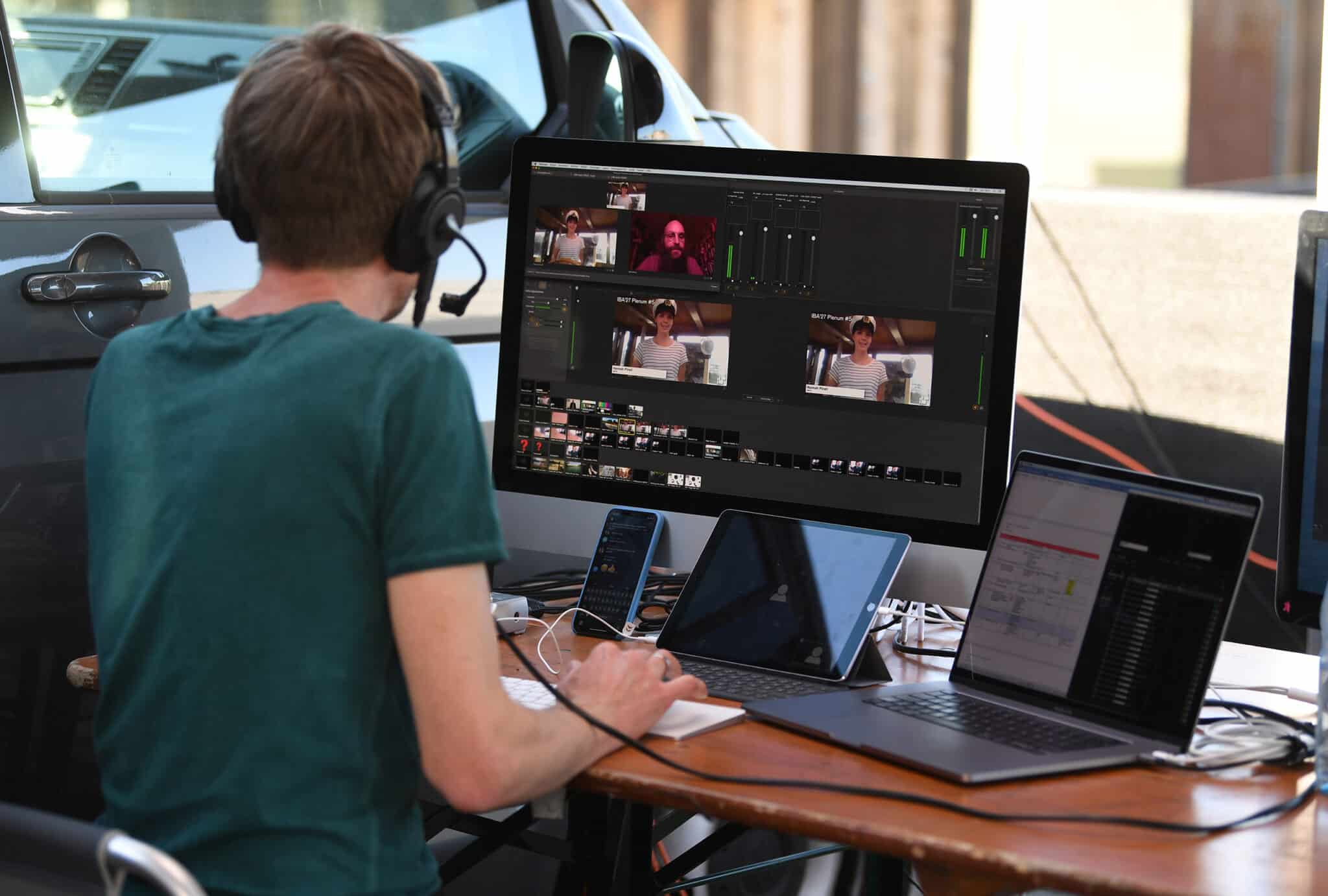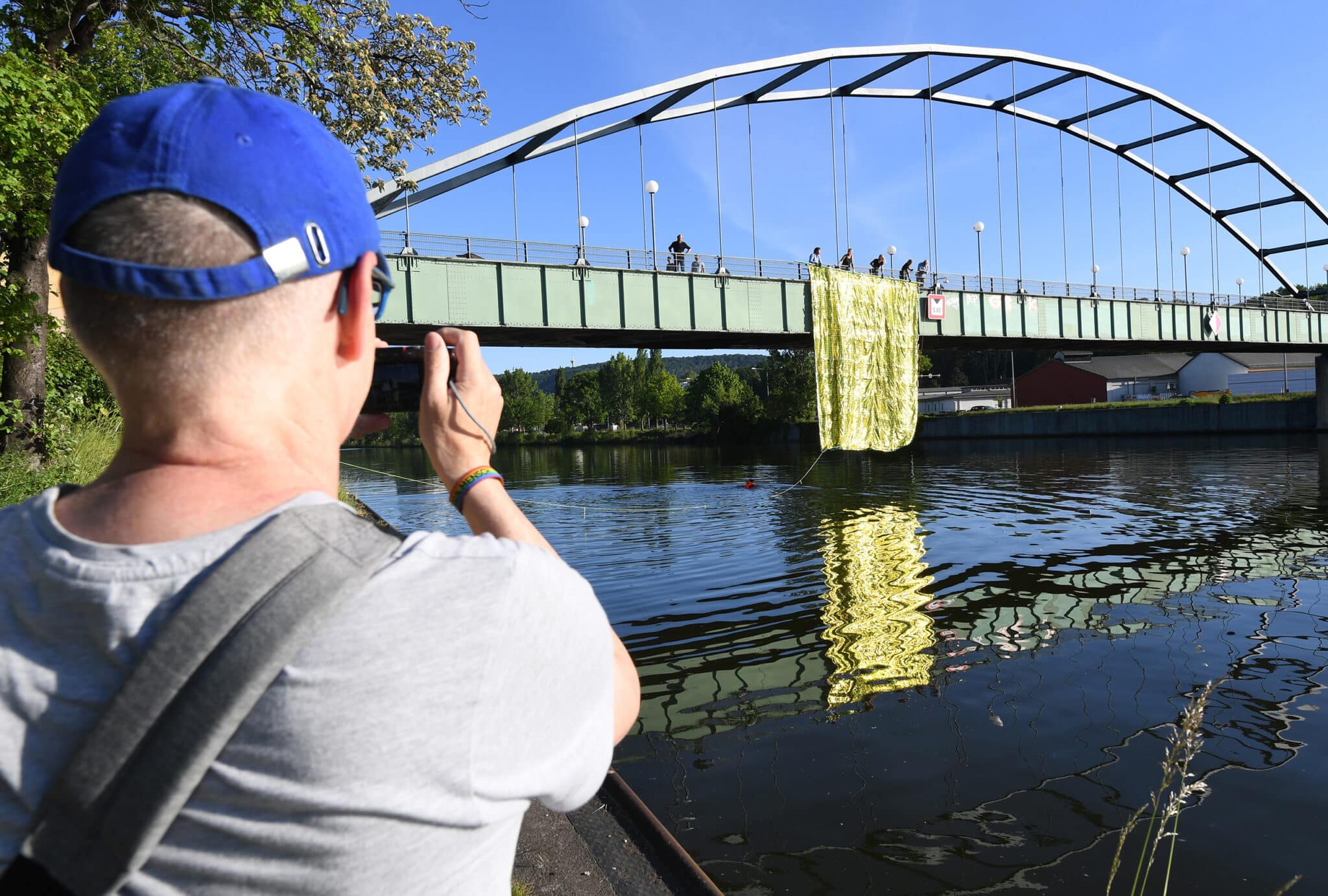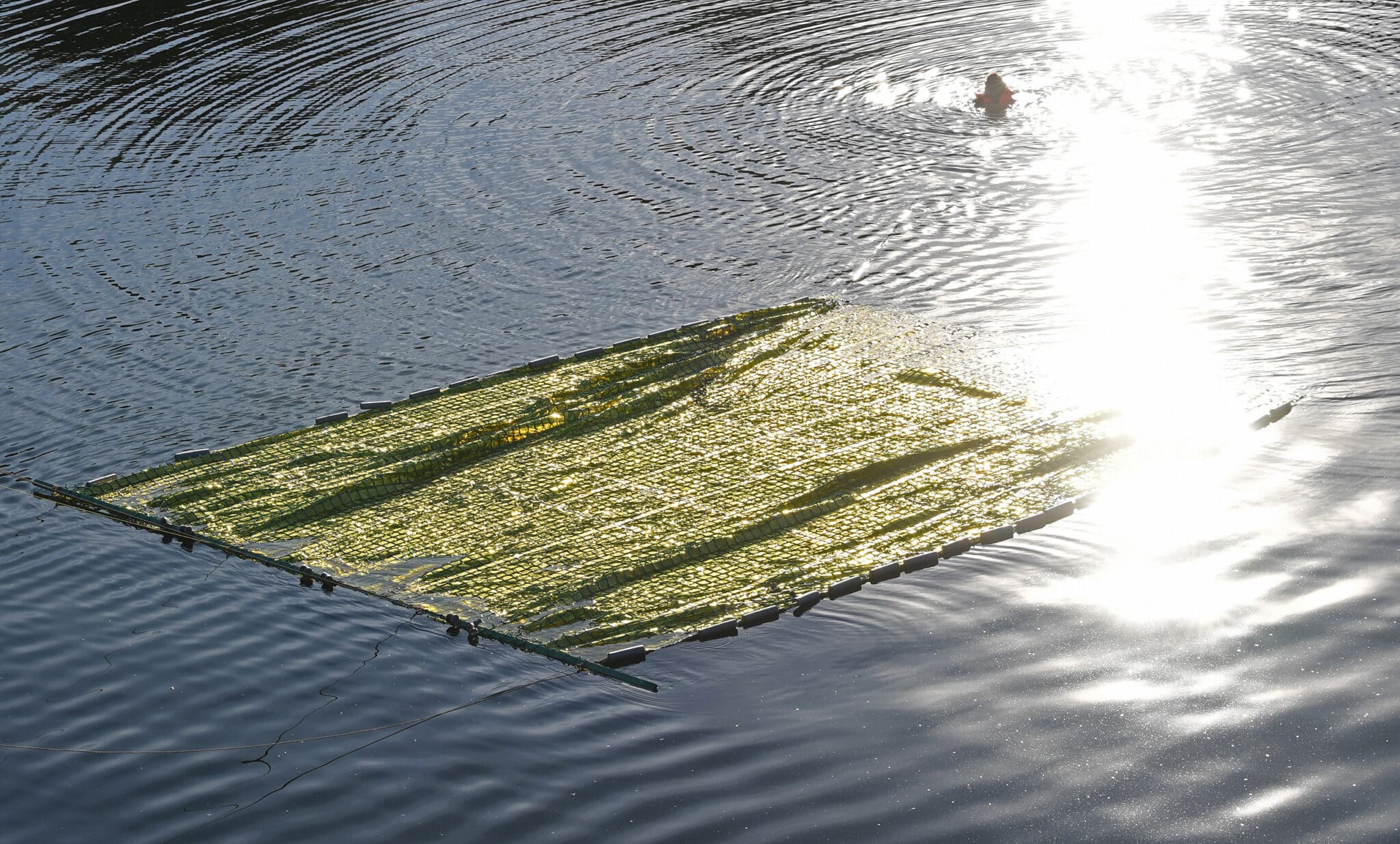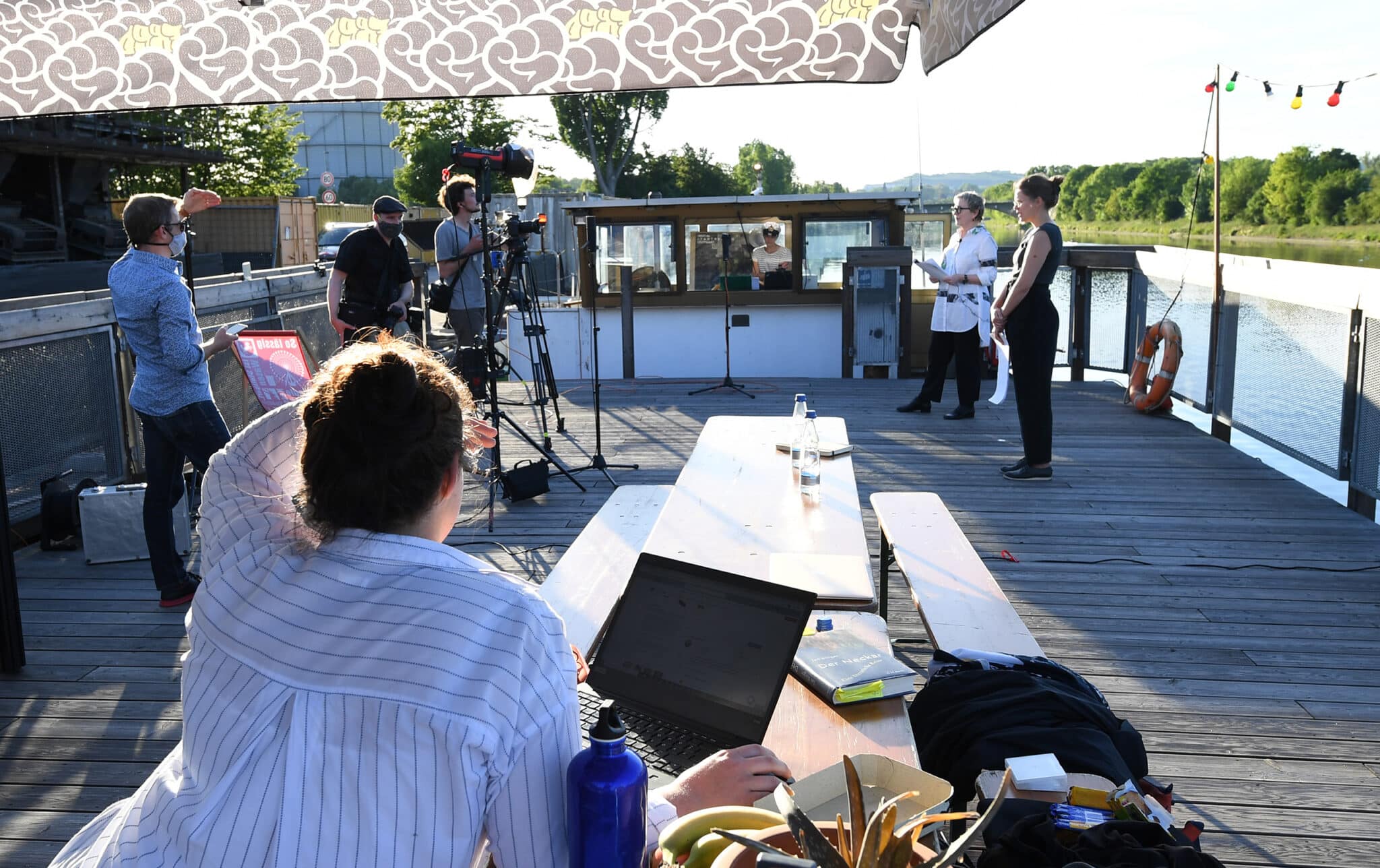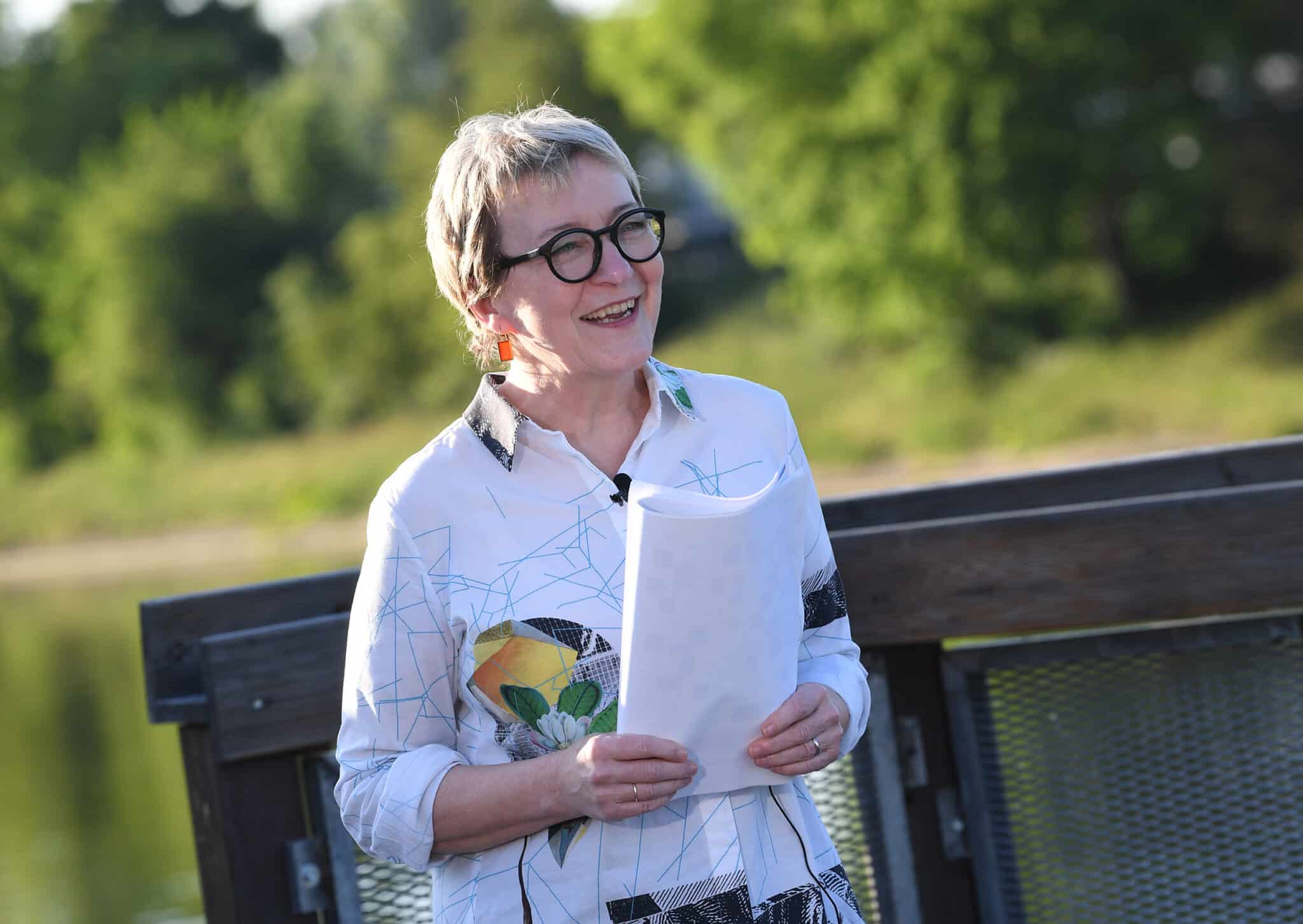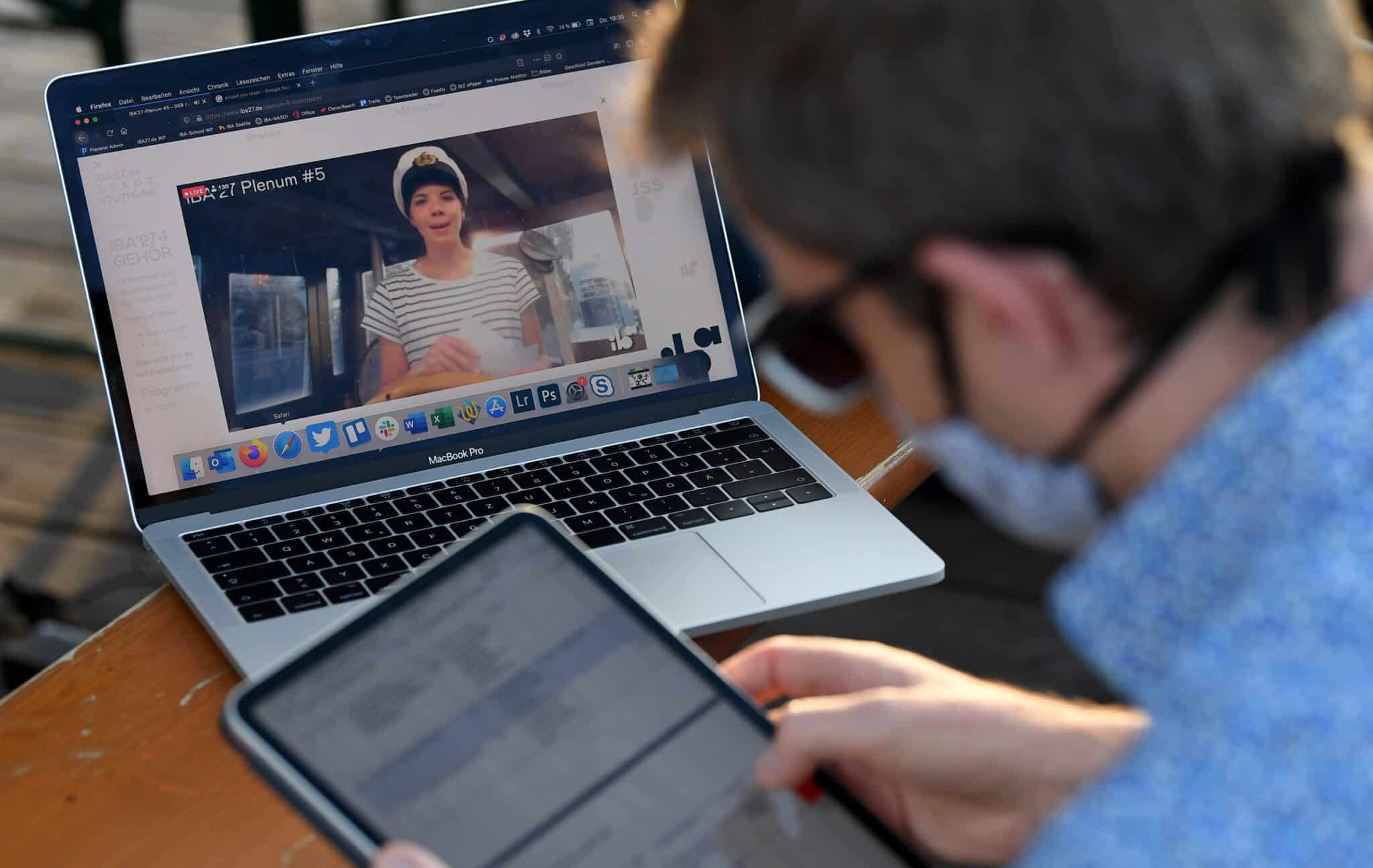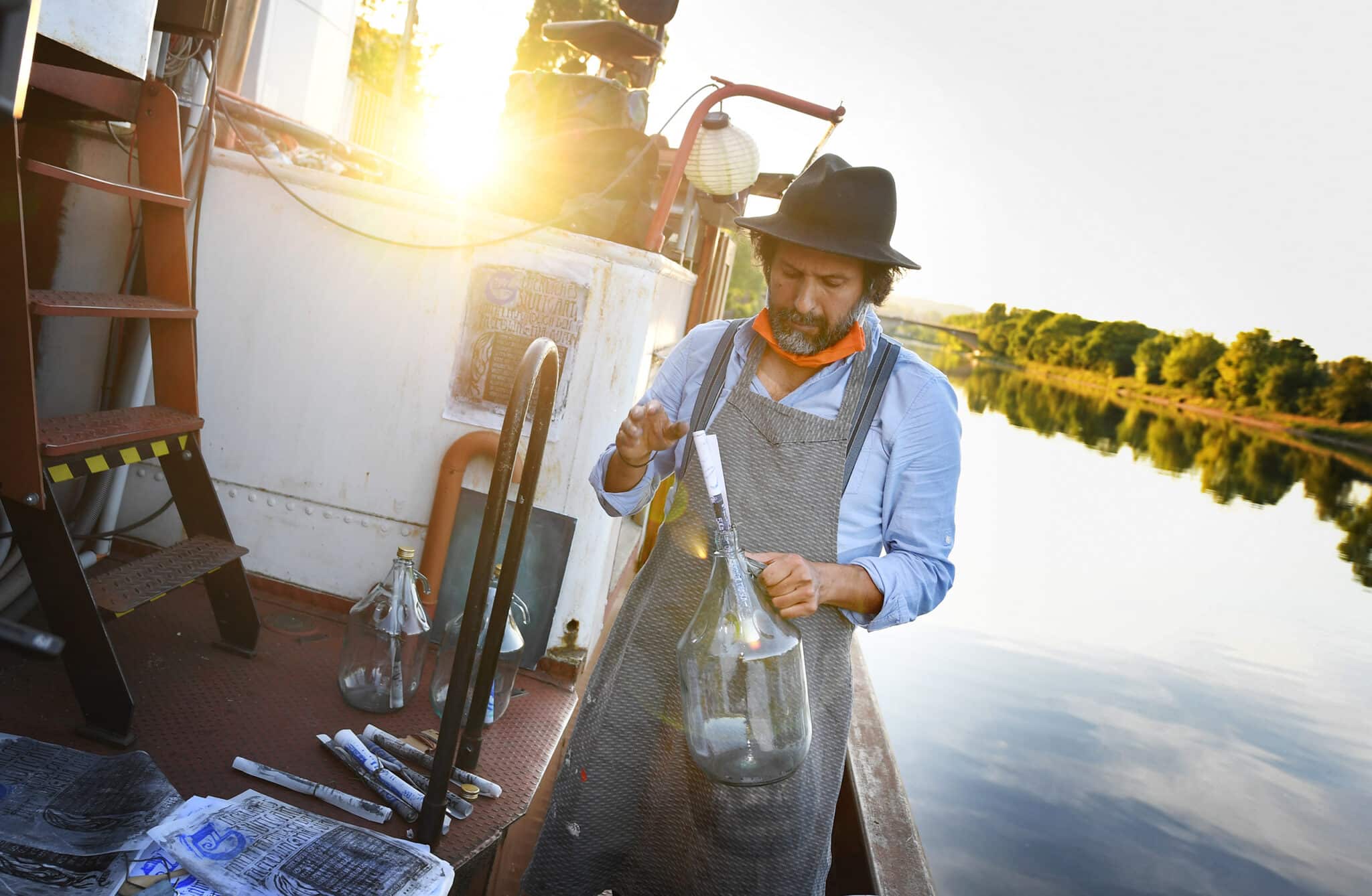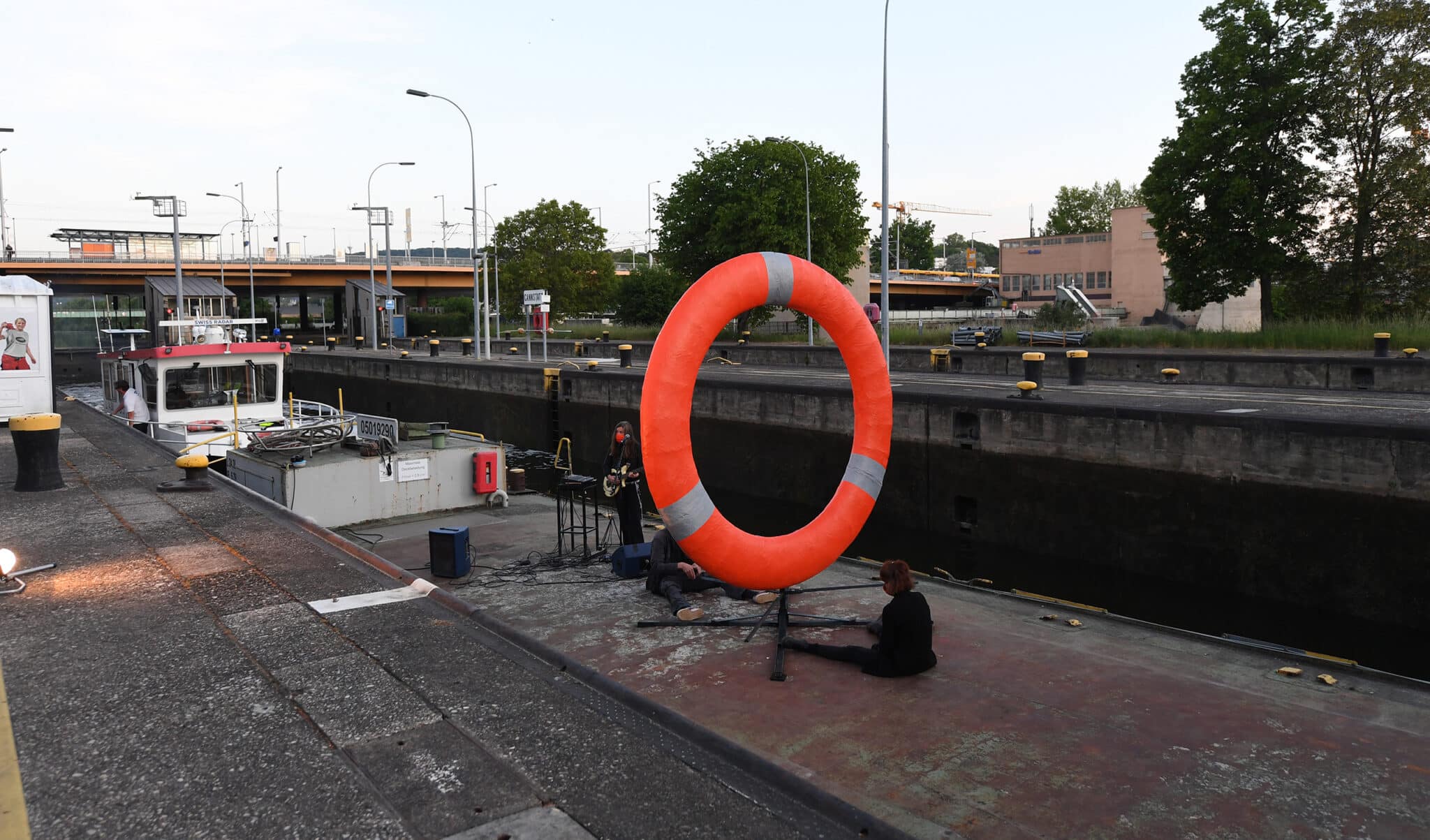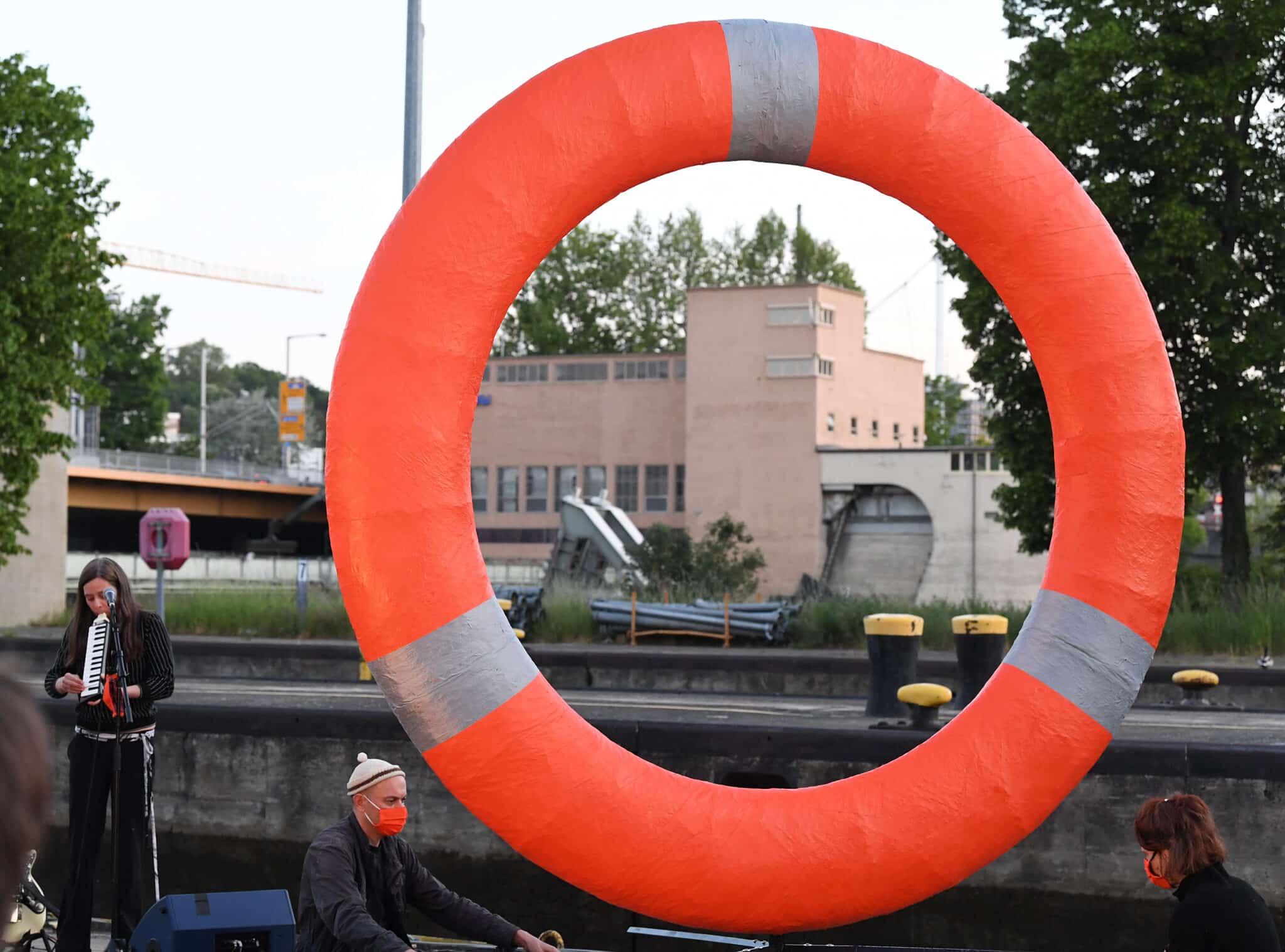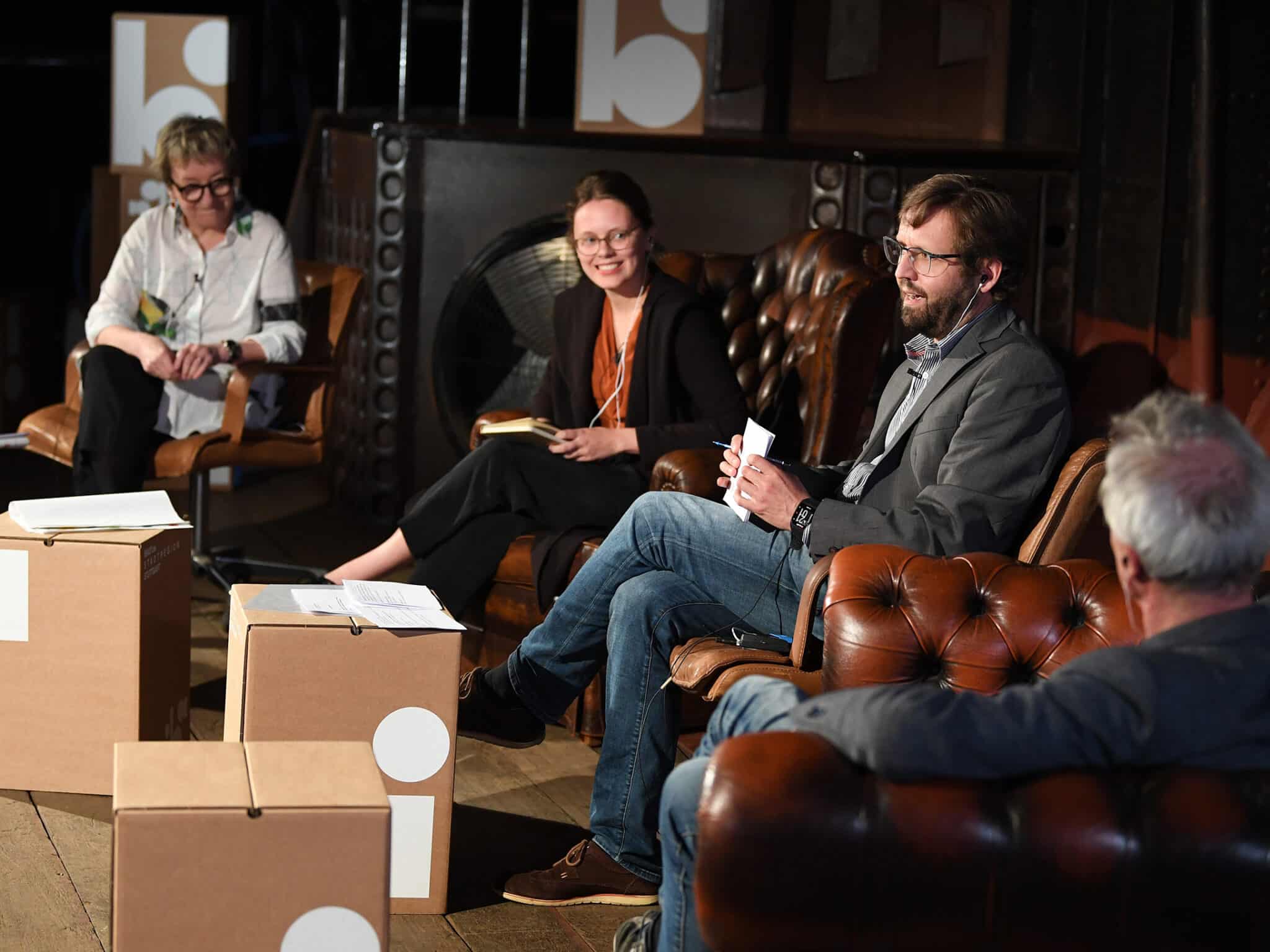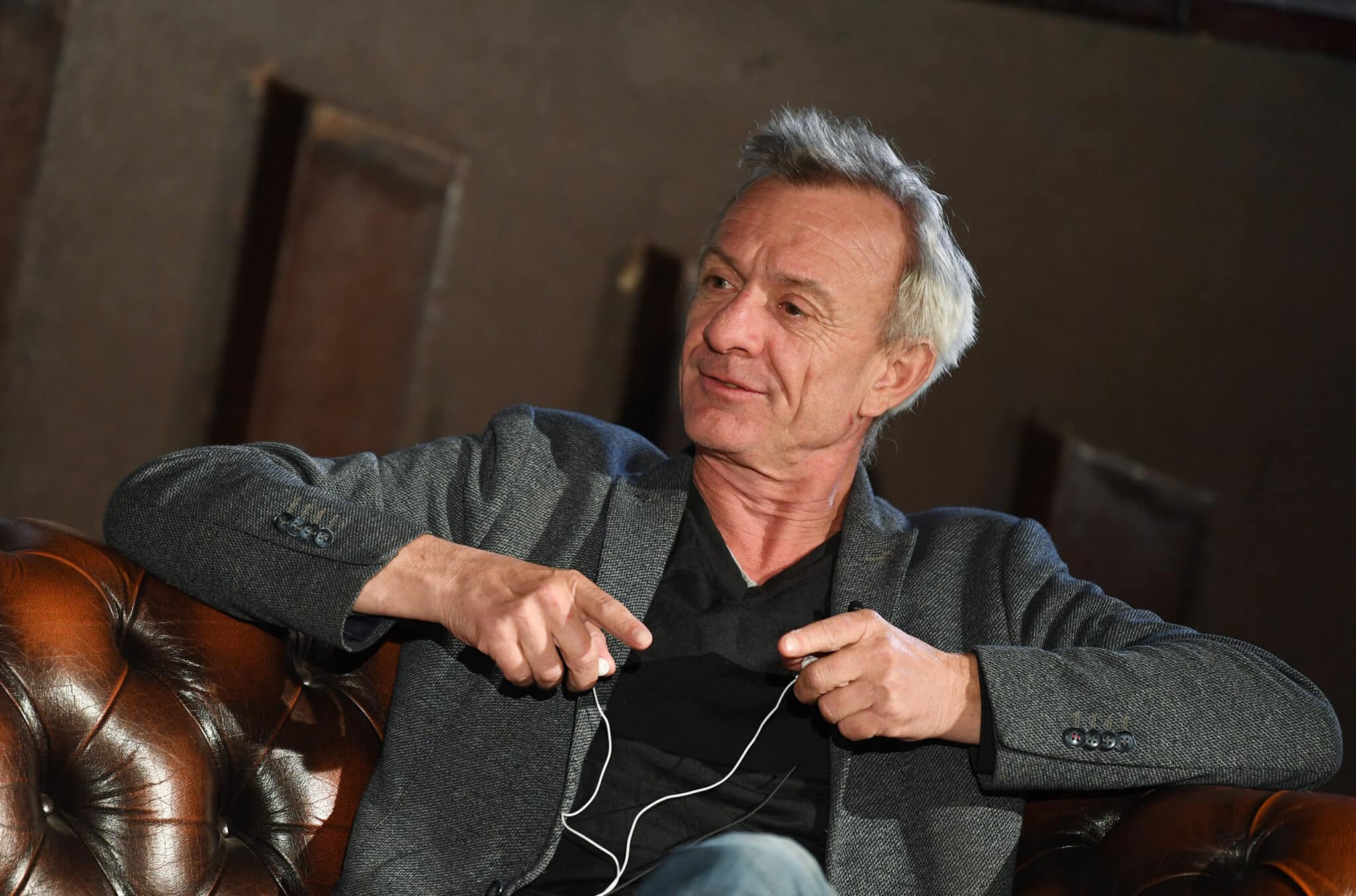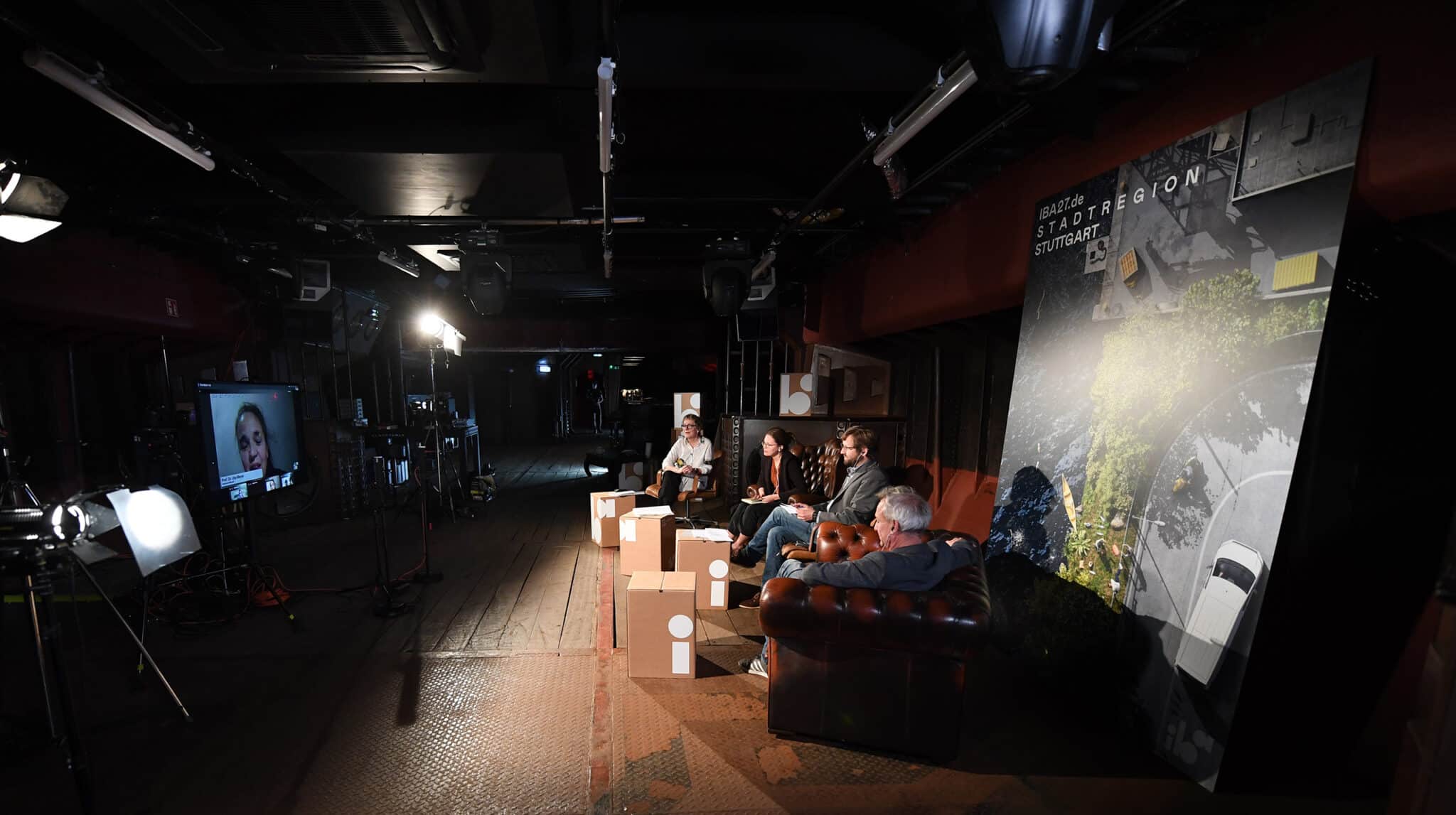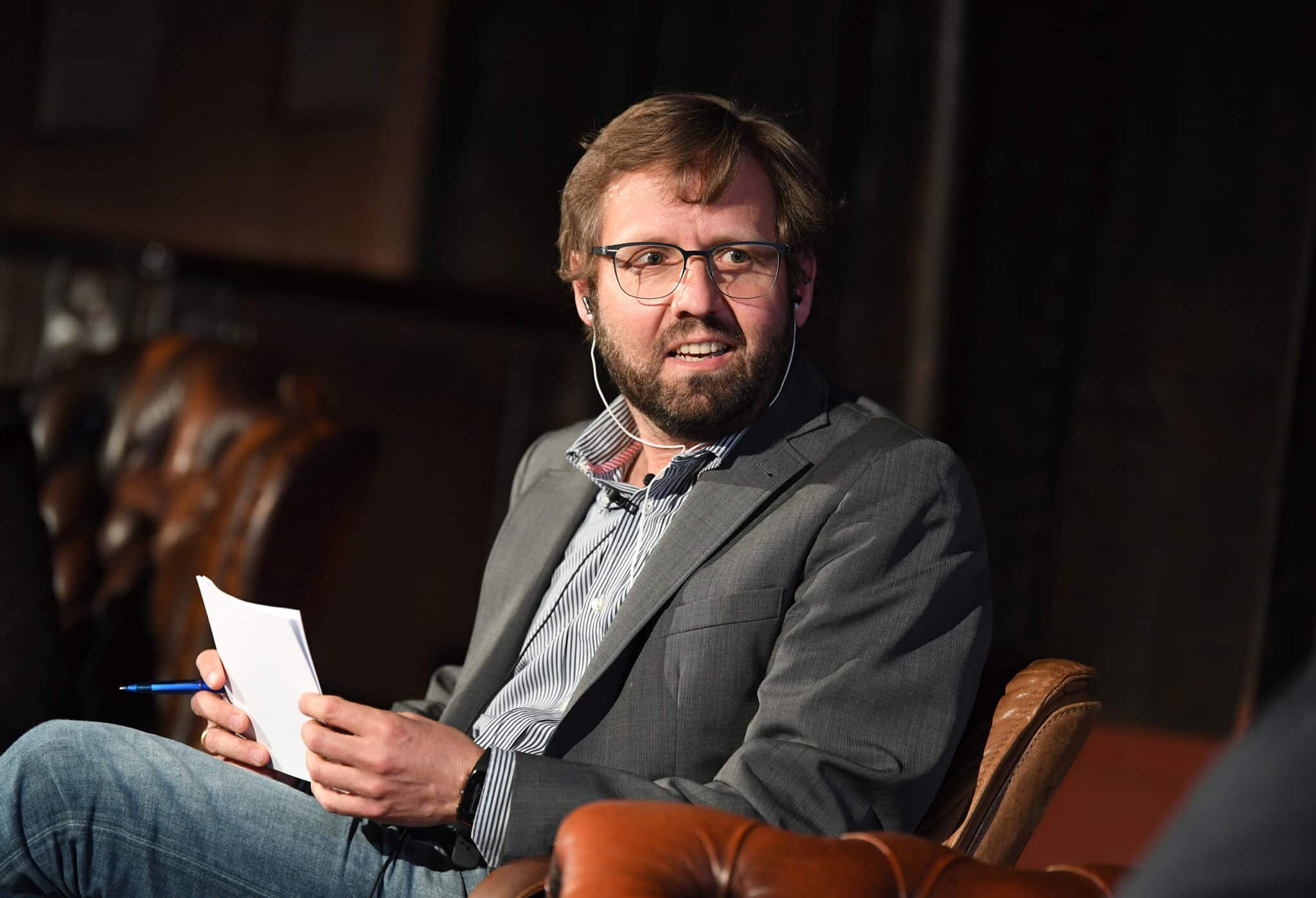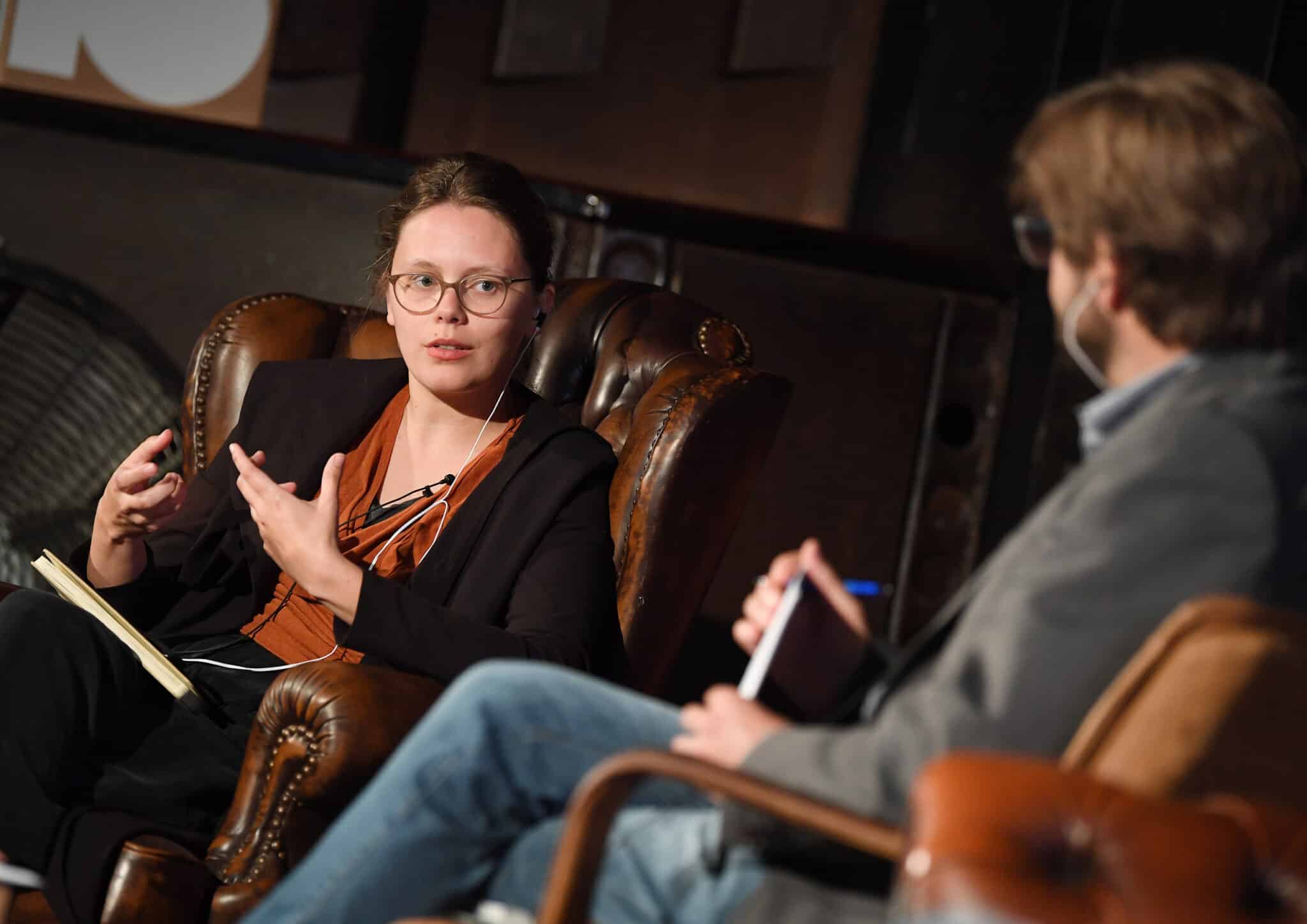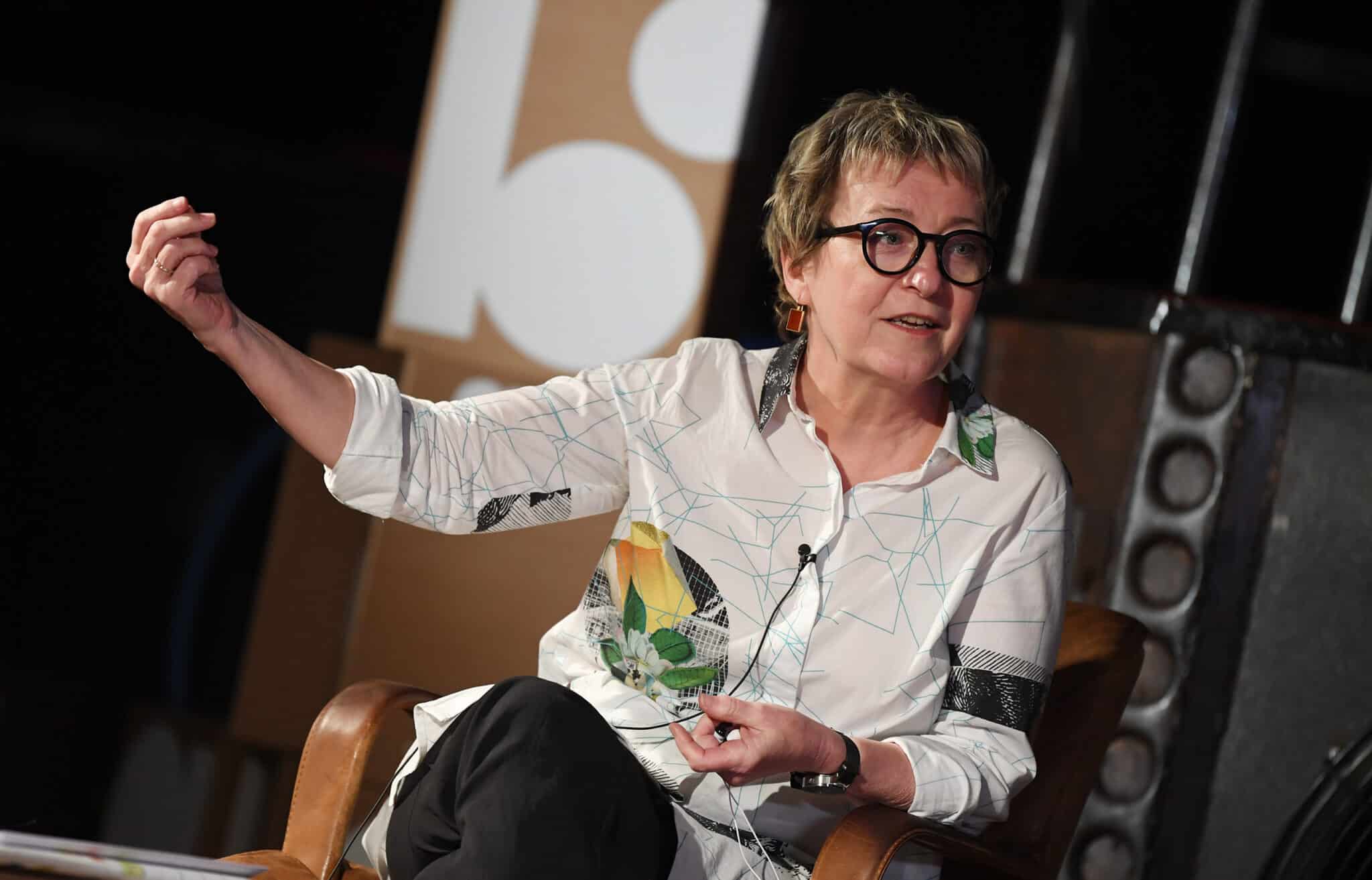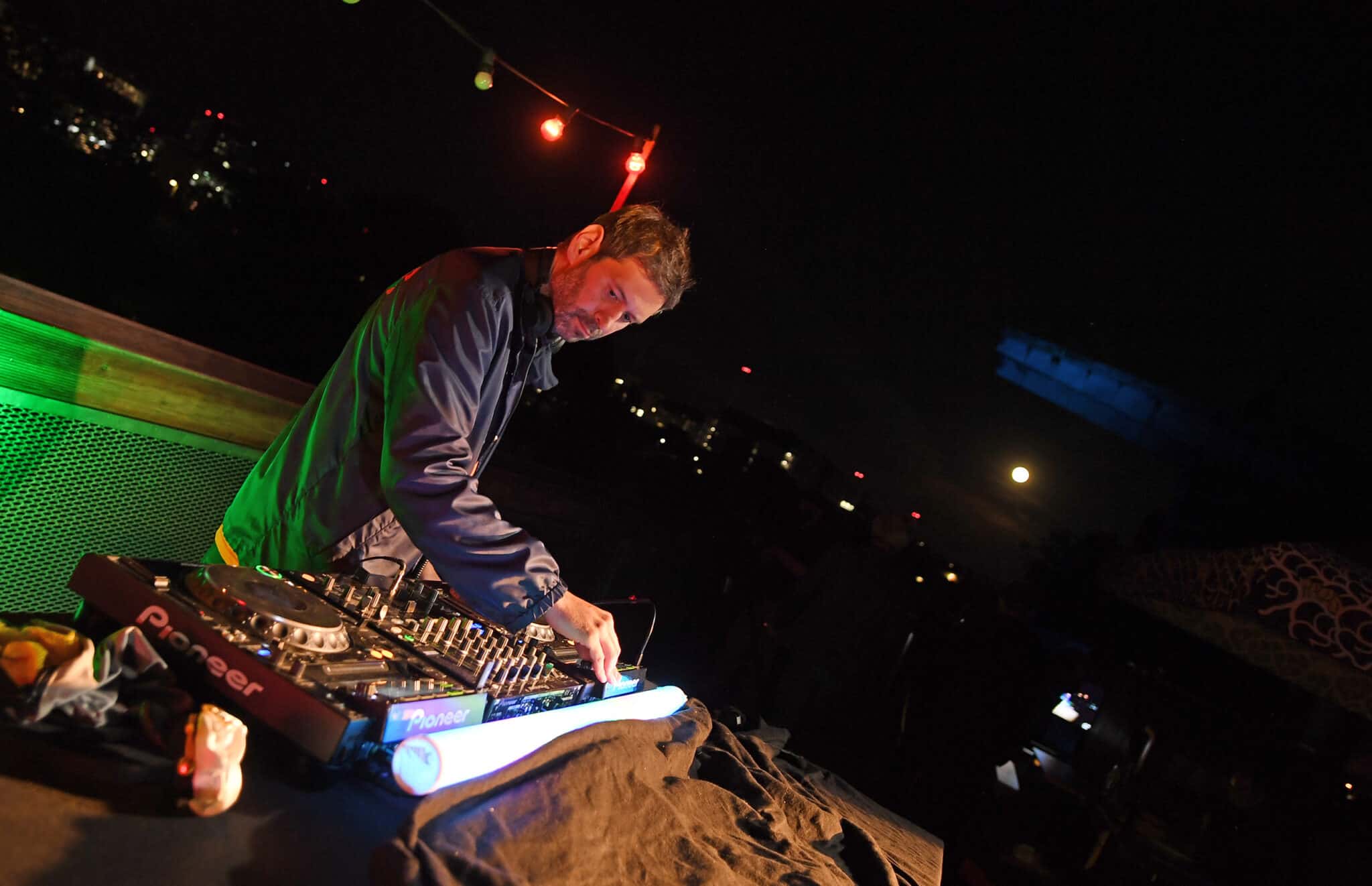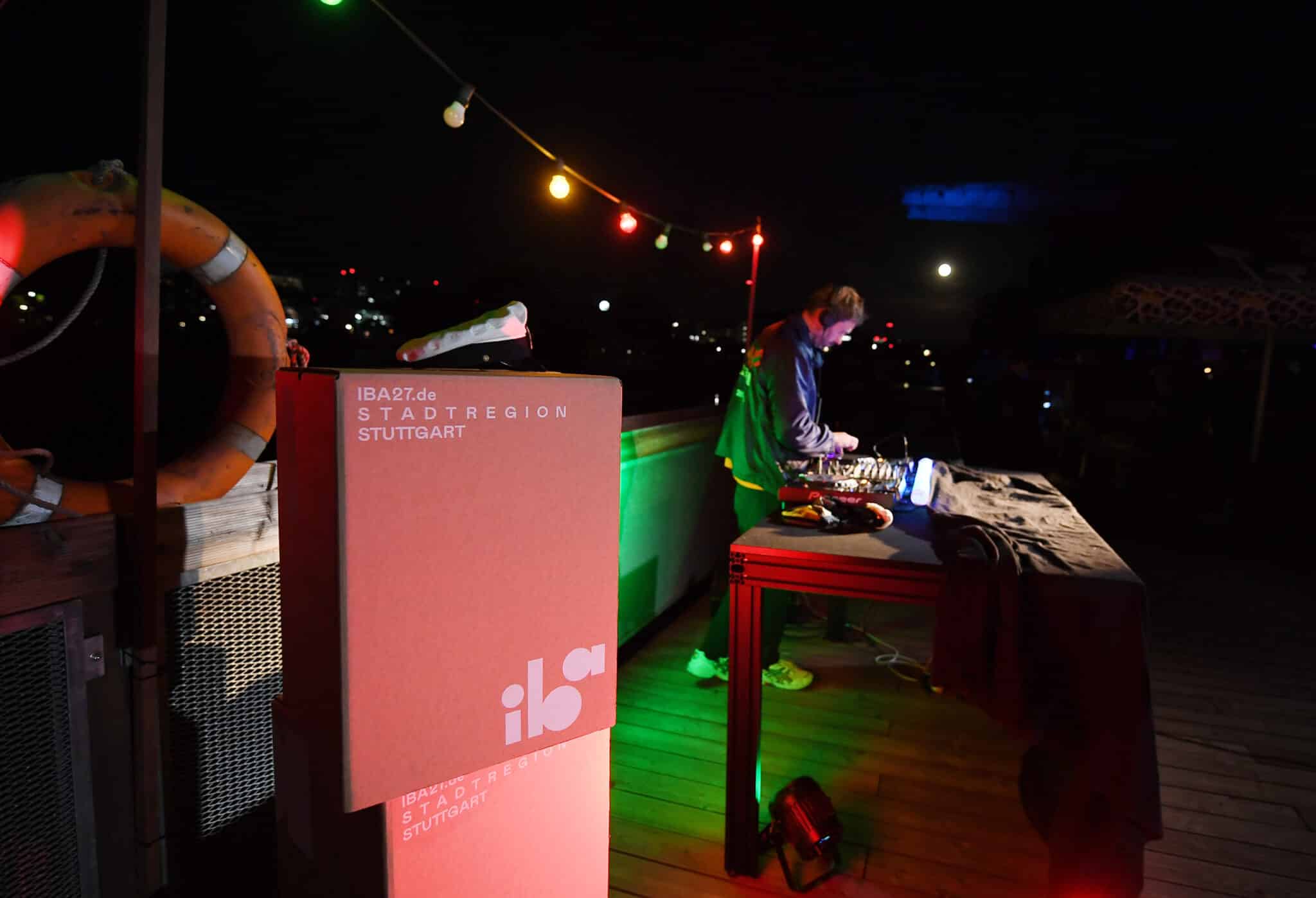Retrospective & documentation
Experiment in flux: the virtual IBA’27 Plenum #5
Andreas Hofer, Director of the International Building Exhibition 2027 StadtRegion Stuttgart (IBA’27), wants Stuttgart to get its river back, while Stuttgart-based artist Ulrich Bernhard hopes that the city can enter a creative pact with the Neckar River. Plenum #5 with the motto »Der Fluss gehört allen« (The river belongs to everyone) provided numerous insights into how to allow people in the Stuttgart Region to experience the Neckar in a real and tangible way. Live streaming, art performances, lectures, digital workshops and a panel discussion were used to demonstrate the river’s potential. While some of these were metaphorical in nature, others were very hands on. For example, the digital live experiment carried out in the midst of the coronavirus crisis took place on ›Fridas Pier‹ – a freight barge repurposed as a club ship – on the Neckar River.
From a ›bathing ship‹ to a park across the Neckar or the Neckar Wave plan to allow for surfing on the river, the range of ideas presented in the digital exhibition (German only) by IBA’27 during Plenum #5 is very broad. It is still being continued and shows that there are already numerous specific ideas and projects that support the objective of the IBA, namely to take back the Neckar as a liveable space and thus as a connecting link that forges the identity of the Stuttgart Region. In his welcome address (German only), Andreas Hofer emphasised the huge potential of the river, but also its current shortcomings such as its poor water quality at times. He explained that one of the urgent tasks is to reactivate natural ecological cycles. In order to experience the Neckar, he said, we also need a ‘healthy’ mix of uses that moves away from use that is almost entirely industrial and toward multifaceted interventions and projects. Stuttgart’s Lord Mayor Fritz Kuhn explained in his greeting that the City of Stuttgart’s master plan for the Neckar, the Stuttgart Region’s landscape park and further initiatives by other neighbouring municipalities were the first important steps on this journey. Nevertheless, he said, the river would have to take a more central place in people’s consciousness.
Neckar Labs as an idea repository
Two workshops, referred to as ›Neckar Labs‹, looked at how to set in motion the transformation of the Neckar as a liveable space. The first workshop examined the Neckar in the city: What are the nice things about the Neckar, and what is typical of the Neckar? Shaped by a major contrast of idyllic corners versus industrial zones, the Neckar is seen as a high-quality but scarcely accessible transit area. Consequently, the visions and wishes formulated during the second phase related to the perception of the Neckar as a public space. »It should be possible to spend time in the Neckar and not just on it«. This is how the presenters and project managers at IBA’27, Nina Riewe and Grazyna Adamczyk-Arns, summed up the ideas collected.
The second Neckar Lab (German only)– presented by Bettina Pau from KulturRegion Stuttgart and IBA’27 trustee Heidi Pretterhofer – focused on the region: What has to happen in order for the region to be able to identify with the river? Because identity is created through action, the recommendation was to view the Neckar as a place of action – both temporarily through events like art campaigns and also through different landscaping. The changing faces of the Neckar are seen as a strength. One suggestion for the IBA was to develop an interactive, performative map that shows existing uses as well as other potential typologies. Here again, the consensus was to take action as soon as possible, for example with smaller campaigns and events that attract attention and thus raise awareness of the river. This is especially true for smaller municipalities along the Neckar.
Neckar stories: impressions along the Neckar
The live stream provided a nuanced and entertaining picture of the vast differences between different parts of the Neckar. Live images were shown at different locations from Remseck to Nürtingen that demonstrated the contrasts as well as the beauty of the banks of the Neckar. At the same time, Hannah Pinell (Participation Officer at IBA’27) presented the schedule from the ship’s bridge and introduced the online map tool ›mapmehappy‹: The tool can be used to mark your own favourite place along the Neckar in order to share it and publish it on an interactive map.
In his subsequent keynote speech, Professor Olaf Kühne from the Department of Geography of the University of Tübingen discussed the ›social construction of landscape, theoretical considerations and practical consequences‹. He demonstrated how the awareness of landscape has changed throughout history and how individual preference is gaining in significance. Kühne’s recommendation is that participation plays a key role in the design of green spaces.
The European view
International inspiration was drawn from various live streams from within Europe. Successful river revitalisation initiatives and projects from Kiev, Warsaw, Wroclaw and Madrid were presented in the live stream.
Making a river – four images of the Neckar
An abstract artistic view of the river was provided by various campaigns by the artists at Kunstverein Wagenhalle: A performance entitled ›Auswerfen‹ by Ute Beck and Karin Sauerbier showed the hidden treasure of the Neckar, with the artists recovering their ‘Neckar gold’ in the form of a large golden net at the ›Berliner Steg‹ jetty. Thomas Putze used music to keep himself above water: a floating acoustic guitar on the Neckar prevented him from going under and accompanied his siren’s song in a project entitled ›Abtauchen‹. The artist Iradj Esmailpour Ghoochani threw a Hölderlin-inspired message in a bottle into the river, while the weir in Bad Cannstatt designed by Paul Bonatz was the site for ›Auftauchen‹, a project that saw a lifebuoy emerge from the water accompanied by musical vibes.
Fencing off, opening up and giving permission
During the closing panel discussion entitled ›Vom Abzäunen, Aufmachen und Erlauben. Wie gelingt eine neue Planungskultur des Öffentlichen?‹ (›Fencing off, opening up and giving permission. How to succeed in developing a new planning culture for public spaces‹) hosted by Christian Milankovic from the ›Stuttgarter Zeitung‹ newspaper, Professor Ute Meyer (Biberach University of Applied Sciences), Bettina Pau (KulturRegion Stuttgart), Nina Riewe and Grazyna Adamczyk-Arns (Project Managers at IBA’27) and Andreas Hofer (IBA’27 Director) discussed the opportunities and possibilities offered by the Neckar. Ute Meyer used the example of Tempelhofer Feld in Berlin to explain how such a transformation could be effected: as a dynamic interplay of targeted planning ideas and proactive community participation. »People need to develop a new image of the Neckar in their minds«. She emphasised the nuanced image of the river and its tributaries that already exists in the region. She explained that the Neckar offers a major opportunity to overlap different uses. The production sites along the Neckar could be designed in a more permeable way, she said, citing the example of a canteen instead of Daimler’s high-rise car park directly at the water’s edge as a way to successfully transform the area. In her view, the way to make the Neckar more attractive is not to push industry away from the river but to interweave it with the natural space. For example, existing structures such as sluice gates could be used for campaigns. Cultural interventions are tools that can be used to raise awareness of the Neckar again and again, Meyer said. IBA’27 has a central role to play, she concluded, by creating space for participation and possibilities. Andreas Hofer wants to see a process based on dialogue with strong images and creative experts. His own personal wish for the future of the Neckar is to one day be able to swim alongside the factories.
The IBA’27 Plenum was a virtual experiment. We want to thank everyone who got involved and took part!
